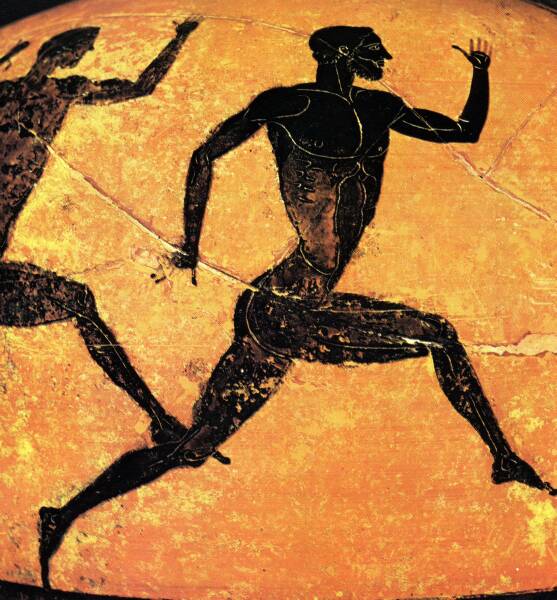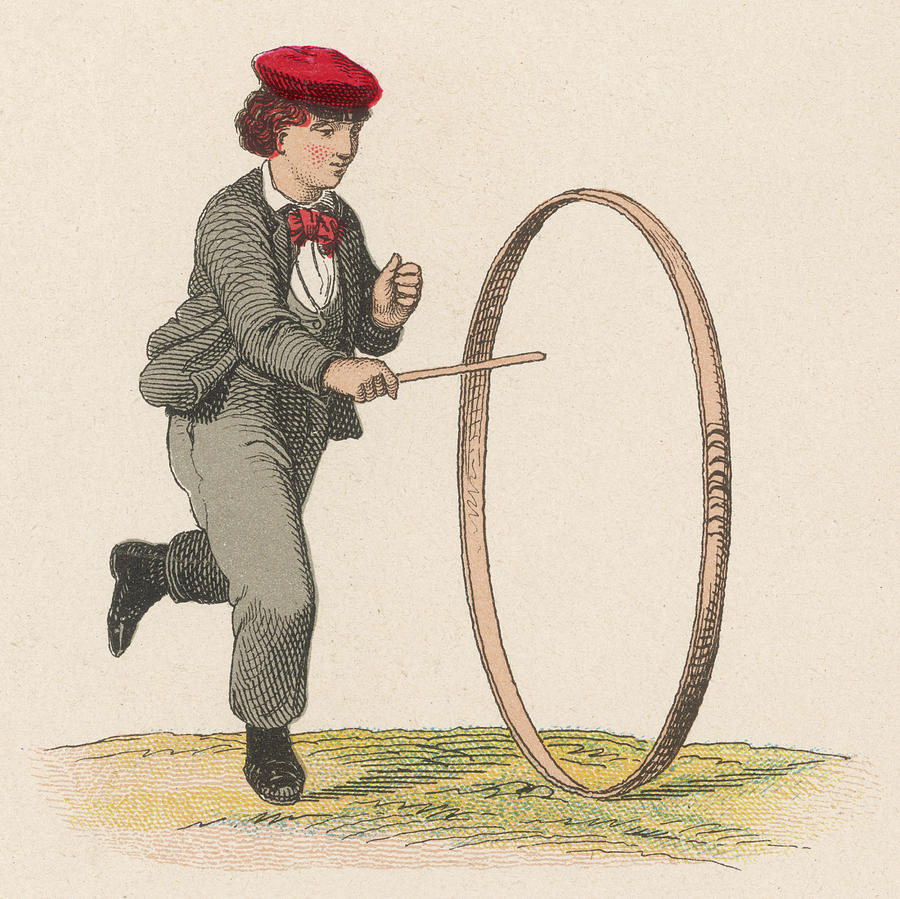The Beginnings of Racing in Berkshire County
Part I
Part I

(Source: Public Domain)
It’s difficult to tell a story if you don’t know where to begin. So, I will follow the time-honored advice of the King in Alice’s Adventures in Wonderland:
The White Rabbit put on his spectacles. `Where shall I begin, please your Majesty?' he asked.
`Begin at the beginning,' the King said gravely, `and go on till you come to the end: then stop.'
This is also, as it happens, excellent advice in racing.
The Very, Very Beginning: A Few Hundred Thousand Years Ago?
We have been racing each other for as long (and longer) than we’ve been human. All species of life compete for survival, and we are no different. Competition is - quite literally - in our blood.
I also think about the vast amount of time that humans were around prior to the first recorded competitions. A hundred-thousand years (at least!) is a long time to go without someone trying to race someone else. No, I can't prove it. But really, how could we not have been racing 50,000 years ago? Thats roughly TWO THOUSAND GENERATIONS of people. I think it safe to say we did a lot of racing in that time, if only from the statistical proof.
In the earliest communities, the biggest advantage a group could have was strength in numbers. Certainly at some point our desire to compete for survival found itself at odds with our desire to maintain a strong community. We at some point realized that killing each other over the right to rule, the right to reproduce, the right to eat first, et cetera was detrimental to our strength as a community. So, as usual, we got creative. We began to find ways to compete for dominance over one another without killing each other. This led to the very earliest versions of what we would now call “sports” – feats of strength and skill that would prove one’s prowess over another.
That’s probably enough speculation for now. I’m an engineer, not a journalist. And this is the history of racing in Berkshire County, after all.
The Very Beginning: Let’s Say 10,000 Years Ago…
New England was recovering from an ice age. Humans had already been in North America for several thousand years at this point, and were starting to make their way to the east coast as the glaciers receded and plant and animal live began to thrive in the area. People settled and thrived in and around modern-day Ontario and the Great Lakes region by 8,500 years ago. These people hunted and settled all over the northeast, including the Berkshires. We don't know much else, because the Europeans didn't really stop to ask.
Meanwhile over the Atlantic, we know that organized, static civilizations existed. We know the ancient Egyptians and Sumerians had sporting events, like wrestling and boxing, as well as races like running, swimming, and rowing. Then of course, much later, we've got the Ancient Greeks and their Olympic Games, which was the culmination of sport as entertianment prior to the common era.

(Source: Public Domain)
The Olympics was originally a single sprint across a stadium, but quickly grew into the menagerie of events that we associate with the Olympics today. There were many different running events, ranging from 200 meters (the length of a stadium in those days) up to around 2.5 miles. There were relay races, as well as races while wearing armor. There were even training programs and age categories. Racing would not be this organized again for another 2,500 years.
The Roman Empire (circa 2,000 years ago) loved their entertainment, and put various types of horse racing at the forefront, as well as boat racing and running. But by the year 900CE or so, the dark ages arrived, and everyone had to race blindfolded.
..no, not really. But sporting isn't as well documented in that era, just like everything else. People were really busy trying not to die of the plague. Amongst the privileged few, were tournaments amongst knights and nobles, which included racing (in addition to more stabby sports like archery and jousting).
During the renaissance (now we're around 1500CE - keep up!) sports and leisure in general made their comebacks. Sport clubs were created, and sport itself became something that people considered part of their daily lives. Rulers of the day were often fond of horse racing (because it was expensive) while the lower classes would play stick-and-ball type sports, and of course, just run.

(Source: Public Domain)
Now we approach the colonial era, so it's time to go back to New England. We know that one branch of the Mohicans, known as the Housatonic (from hous atonic, which means “the other side of the mountains”), inhabited the Housatonic River Valley in the area of Great Barrington at the time of European contact in the 1600s. Anyone who has hiked through North Adams or Florida will certainly forgive them for not settling in the north county. But maybe, we can speculate (really, it's OK), some of them loved the mountains just as much as we do.
The Mohicans were traders as well as warriors, building long trails between the Connecticut, Housatonic, Hoosac, and Hudson River valleys. Naturally, they also used those trails to set and defend boundaries or execute the occasional offensive against competing communities. Nonetheless, it is hard to imagine that world and not imagine young men and women racing along those trails after game, seeing how quickly one could cover the distance from the Hoosac range to the Taconics, or competing to see who could paddle fastest against the current of the Housatonic. I know they did it, because they were us. Or we were them. In any case, we all shared that old instinct to compete for status and survival.
In Part II, we'll investigate what happened next and set the stage for all the racing sports we know and love in the Berkshires today.